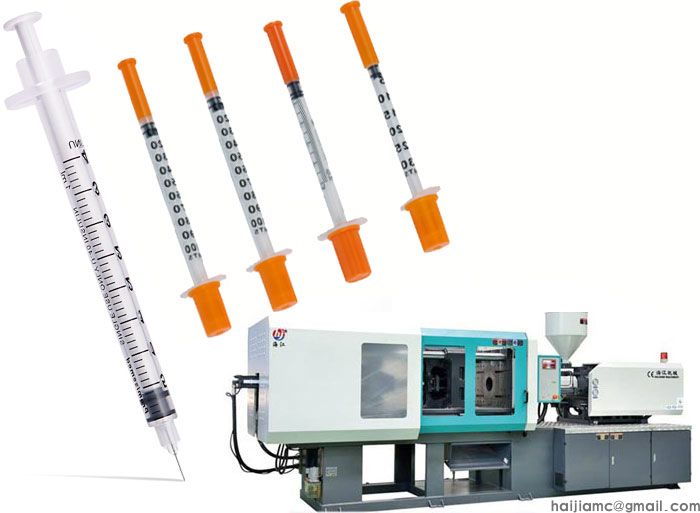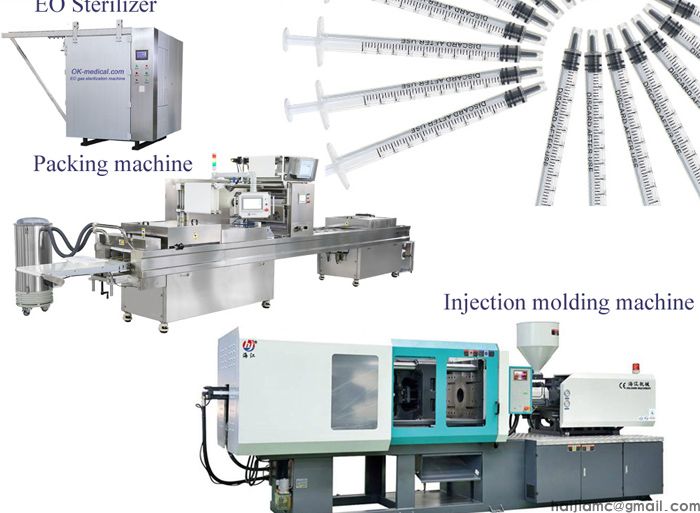Crafting Your Own Syringe Needle: A Creative Guide to Homemade Medical Tools
Are you a DIY enthusiast with a passion for crafting and a knack for problem-solving? If so, get ready to dive into the world of homemade medical tools. In this article, we will guide you through the process of crafting your own syringe needle, providing you with a creative and practical solution for medical emergencies and situations where professional supplies may not be readily available.
By following our step-by-step instructions and using common household items, you can create a syringe needle that is safe and effective. We will walk you through the necessary materials and provide tips on how to achieve the desired level of precision and sterilization.
While it's important to note that homemade medical tools should never replace professional supplies, knowing how to create your own can be a valuable skill in certain circumstances. So, if you're ready to unleash your creativity and learn how to craft your own syringe needle, let's get started!

Why would someone want to create their own syringe needle
When it comes to medical emergencies, having the right tools can make all the difference. However, there may be instances where professional medical supplies are not accessible, such as during a natural disaster or in remote areas. In these situations, knowing how to craft your own syringe needle can be a lifesaver.
Crafting your own syringe needle also allows you to exercise your problem-solving skills and creativity. It can be a rewarding and empowering experience to create a functional medical tool from everyday items. Additionally, being able to provide medical assistance in emergencies when professional tools are unavailable can give you a sense of purpose and the ability to make a positive impact.
Safety precautions when crafting homemade medical tools
Before diving into the process of crafting your own syringe needle, it's crucial to understand the importance of safety precautions. While homemade medical tools can be effective in certain situations, they should never be used as a substitute for professional supplies. It's essential to prioritize your safety and the safety of others.
When crafting homemade medical tools, ensure that you are working in a clean and sterile environment. Wash your hands thoroughly with soap and water before starting the process. It's also advisable to wear gloves to minimize the risk of contamination. Additionally, be cautious when handling sharp objects and ensure that you dispose of any waste properly to prevent injuries and potential infections.
Tools and materials needed for crafting a homemade syringe needle
Crafting your own syringe needle requires a few basic tools and materials that can be found in most households. Here's a list of what you'll need:
- Sharp object: To create the needle, you'll need a small, sharp object that can be shaped into a point. A sewing needle, a safety pin, or a small piece of metal can work well for this purpose. Choose an item that is sturdy and clean.
- Tube or cylinder: You'll also need a tube or cylinder to serve as the body of the syringe. This can be made from various materials, such as a plastic straw, a small metal tube, or even a hollowed-out pen barrel. Ensure that the tube is clean and free from any debris.
- Rubber or silicone stopper: To create the plunger of the syringe, you'll need a rubber or silicone stopper that fits snugly inside the tube. This will allow you to control the flow of liquid when using the homemade syringe. If you don't have a stopper, you can also consider using a small balloon or a piece of rubber cut to size.
- Adhesive or glue: To secure the needle and the stopper in place, you'll need a strong adhesive or glue. Choose a non-toxic adhesive that is safe for medical use. It's important to ensure that the adhesive is fully dry and cured before using the homemade syringe needle.
Keep in mind that the availability of materials may vary depending on your location and resources. It's essential to use what is readily accessible to you and prioritize your safety when selecting materials.

Step-by-step guide to crafting a homemade syringe needle
Now that you have gathered the necessary tools and materials, let's walk through the step-by-step process of crafting your own syringe needle:
- Prepare the needle: Take your chosen sharp object, whether it's a sewing needle, a safety pin, or a small piece of metal, and sterilize it with rubbing alcohol or boiling water. Once sterilized, shape one end of the object into a point using pliers or a file. Ensure that the point is sharp but not jagged.
- Prepare the tube: If you're using a plastic straw or a pen barrel, cut it to the desired length for your syringe. Ensure that the cut is clean and smooth to prevent any sharp edges. If you're using a metal tube, ensure that it is clean and free from any debris or contaminants.
- Insert the needle into the tube: Apply a small amount of adhesive or glue to the pointed end of the needle. Carefully insert the needle into one end of the tube, ensuring that it is centered and secure. Hold the needle in place until the adhesive dries completely.
- Prepare the plunger: Take the rubber or silicone stopper and ensure that it fits snugly inside the tube. If necessary, trim the stopper to achieve the desired fit. This will serve as the plunger that controls the flow of liquid when using the syringe.
- Attach the plunger to the tube: Apply adhesive or glue to one end of the stopper and carefully insert it into the opposite end of the tube. Ensure that the stopper is securely attached and allow the adhesive to dry completely.
- Test the homemade syringe needle: Once the adhesive is fully cured, test the functionality of your homemade syringe needle. Gently pull and push the plunger to ensure smooth movement and airtight suction. If any issues arise, make the necessary adjustments or consider starting the process again with fresh materials.
Remember, the homemade syringe needle is not a substitute for professional medical equipment. It should only be used in emergencies when professional supplies are unavailable, and professional medical assistance should always be sought as soon as possible.

Sterilization methods for homemade medical tools
Sterilization is a critical aspect of using homemade medical tools. While it may not be possible to achieve the same level of sterilization as professional equipment, there are steps you can take to minimize the risk of contamination.
Before using your homemade syringe needle, ensure that all components have been thoroughly sterilized. You can sterilize the needle by boiling it in water for several minutes or by soaking it in rubbing alcohol for at least 15 minutes. Similarly, the tube and plunger should be sterilized using the same methods.
It's important to note that sterilization alone may not guarantee complete safety. It's advisable to use your homemade syringe needle as a last resort and seek professional medical assistance as soon as possible.
Alternative uses for homemade medical tools
While the main focus of this article is on crafting a homemade syringe needle, it's worth noting that other homemade medical tools can be created in a similar manner. Depending on the situation and available resources, you can use your creativity and problem-solving skills to craft various medical tools.
For example, you can create a makeshift splint using sturdy materials such as cardboard and cloth, or fashion a tourniquet using a belt or a piece of fabric. These homemade tools can provide temporary relief and support until professional medical assistance is available.
However, it's important to remember that homemade medical tools should only be used in emergencies when professional supplies are not accessible. Always prioritize seeking professional medical assistance whenever possible.
Legal considerations when using homemade medical tools
Using homemade medical tools raises important legal considerations. Different countries and regions have varying regulations regarding the use of medical equipment, even in emergency situations. It's crucial to familiarize yourself with the laws and regulations in your area and understand the potential consequences of using homemade medical tools.
While crafting your own syringe needle can be a useful skill, it's important to remember that professional medical assistance is always the best option. Homemade medical tools should only be used as a last resort when professional supplies are not available. Always prioritize your safety and the well-being of others.

Tips for maintaining and storing homemade medical tools
To ensure the longevity and effectiveness of your homemade medical tools, proper maintenance and storage are essential. Here are a few tips to keep in mind:
- Clean and sterilize: After each use, thoroughly clean and sterilize your homemade medical tools. This will help prevent the growth of bacteria and reduce the risk of contamination.
- Store in a clean, dry place: Store your homemade medical tools in a clean and dry area to prevent damage and maintain their usability. Consider using a designated container or pouch to keep them organized and protected.
- Regularly inspect for wear and tear: Regularly inspect your homemade medical tools for any signs of wear and tear. Replace any components that show signs of damage or deterioration to ensure their effectiveness.
- Stay updated on professional medical supplies: While knowing how to craft your own medical tools can be valuable, it's important to stay updated on professional medical supplies and advancements. Familiarize yourself with the latest developments in medical equipment to ensure that you have access to the best tools when needed.
By following these tips, you can maintain the functionality and safety of your homemade medical tools and be prepared for emergencies when professional supplies may not be readily available.
Conclusion: The satisfaction and potential benefits of crafting your own syringe needle
In conclusion, crafting your own syringe needle can be a creative and practical solution for medical emergencies and situations where professional supplies may not be accessible. While homemade medical tools should never replace professional equipment, knowing how to create your own can be a valuable skill in certain circumstances.
By following the step-by-step guide outlined in this article and prioritizing safety and sterilization, you can create a homemade syringe needle that is safe and effective. Remember to always seek professional medical assistance whenever possible and use homemade tools as a last resort.
Crafting your own medical tools allows you to exercise your problem-solving skills, tap into your creativity, and potentially make a positive impact in emergency situations. So, unleash your creativity, stay prepared, and remember that knowledge is power when it comes to crafting your own syringe needle.






